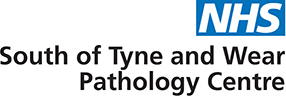Quantiferon Gold TB Immunity Test
Code:
QUANT TB
Sample Type:
Green topped Lithium Heparin Tube (no gel)
Provide a minimum 5ml of blood (full tube)
Ref Ranges/Units:
N/A
Turnaround:
2 days
Special Precautions/Comments:
N.B. The following samples will NOT be accepted:
- Less than 4.5 mls of whole blood
- Lithium heparin tubes containing separating gel
- Samples greater than 16 hours old from collection upon arrival at laboratory
Interferences: Only use lithium heparin as a blood anticoagulant since other anticoagulants interfere with the assay. Gel tubes must not be used.
False negative results can be due to stage of infection, co-morbid conditions that affect immune functions, or other immunological variables.
Method: Direct sandwich chemiluminescence immunoassay for the detection of IFN-γ. Calibration: Internal kit supplied lot specific calibrators (LIASON). EQA scheme: NEQAS IGRA. IQC: Internal kit controls (LIASON).
Interpretation: Results will be reported as Positive, Indeterminate, or Negative.
Samples testing POSITIVE indicate that the patient has evidence of cell-mediated immunological reactivity to M. tuberculosis and therefore infection with M. tuberculosis (latent or active) is likely. INDETERMINATE results can occur due to anergy, excessive levels of circulating interferon or presence of heterophile antibodies. An indeterminate result cannot exclude the possibility of M. tuberculosis infection. A NEGATIVE result indicates that the patient has no evidence of cellular immunity to M. tuberculosis and therefore a latent M.tuberculosis infection is unlikely.
Please note that this is an indirect test for M. tuberculosis infection (including disease), therefore results must be used in conjunction with patient’s epidemiological history, current medical status, and other diagnostic evaluations.
Additional Information:
Background information: Tuberculosis is one of the oldest known human diseases. It is a communicable disease, transmitted almost exclusively through cough aerosols carrying pathogens of the Mycobacterium tuberculosis complex. Globally the disease continues to be a major public health threat.
Pathogenesis is characterised by a period of asymptomatic subclinical infection, defined broadly as latent tuberculosis infection (LTBI), which may last for weeks or decades. Persons with LTBI are classically considered to be asymptomatic and not infectious. LTBI is defined as a state of persistent immune response to M.tuberculosis antigens without evidence of clinically manifested TB disease. Latent TB bacilli may however, remain viable and reactivate after a prolonged interval to cause active TB disease. The goal of testing for LTBI is to identify individuals who are at increased risk for the development of active TB; these individuals would benefit most from treatment of LTBI (also termed preventive therapy or prophylaxis).
The interferon gamma release assay (IGRA) represents indirect markers of M. tuberculosis exposure and indicate a cellular immune response to the pathogen. The tests depends on cell-mediated immunity (memory T-cell response), and therefore cannot accurately distinguish between LTBI and active TB disease.
Keywords: Tuberculosis, TB, latent, screening, interferon, TBQ, QFT, QTB


